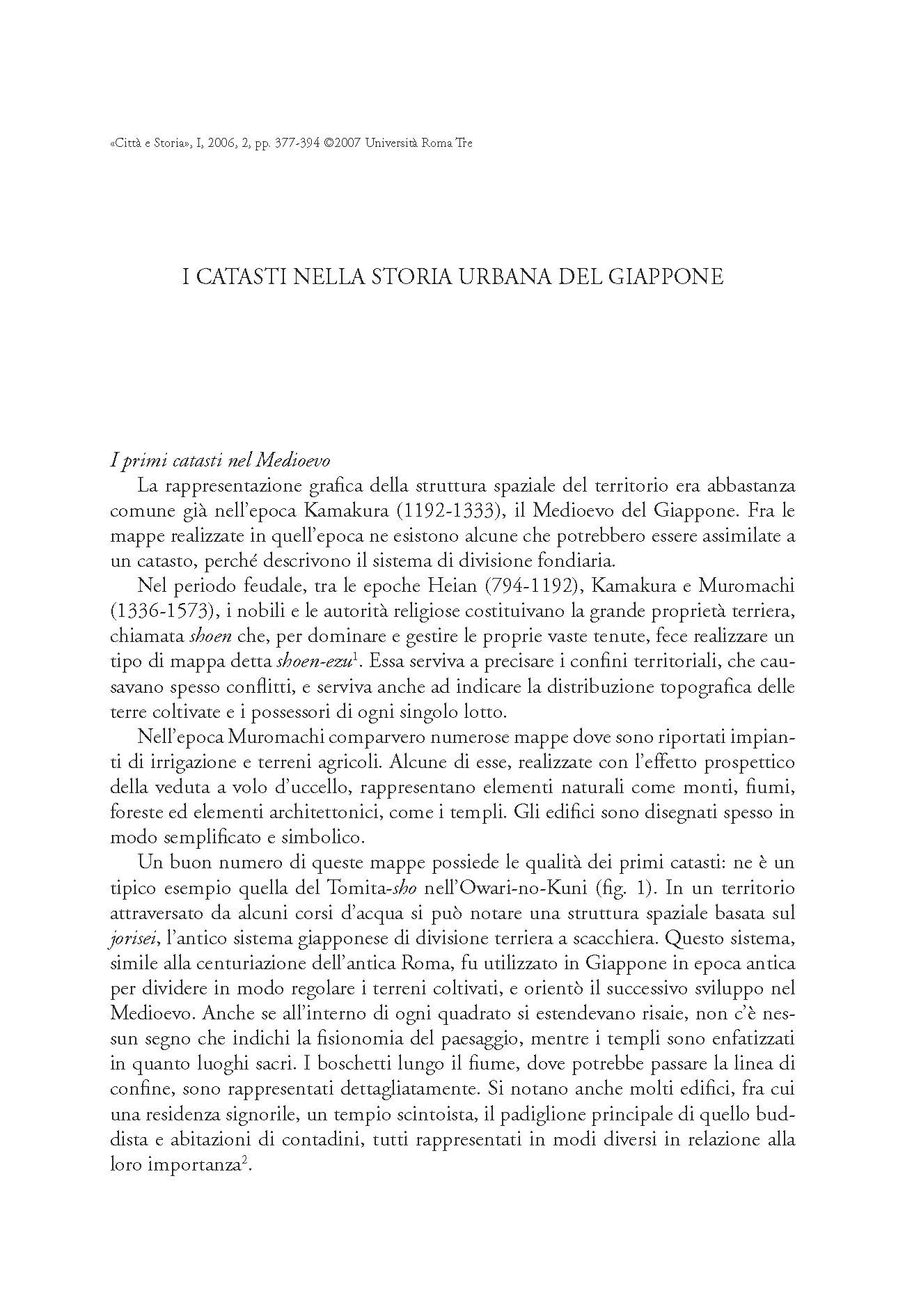I catasti nella storia urbana del Giappone
6,00 €
Graphic representation of both city and local spatial structure was already present in medieval Japan. During the Edo period (1603-1867), maps and plans of various types were made for the diverse administrative needs of the han (feudal clan). Among these, is the dempata-ezu (dempata = agricultural land), cadastral map. These were created by the authorities in order to have access to the most important data concerning cultivated land: its typology, area and productivity. In the first half of the eighteenth century, the bakufu ordered the creation of maps called koken-ezu in order to manage and control the zone of Edo (the previous name of Tokyo). The koken-ezu contained extremely detailed information about the local society (properties, administrations, land prices, etc.) as well as about the public infrastructure (canopies, sewers, aqueducts, roads, canals, etc.). The koken-ezu demonstrates that the individual districts in the city were well managed thanks to a certain autonomy granted by the feudal regime. This cadastre of Edo was a truly indispensable document for every phase of the city’s social and administrative life.
Graphic representation of both city and local spatial structure was already present in medieval Japan. During the Edo period (1603-1867), maps and plans of various types were made for the diverse administrative needs of the han (feudal clan). Among these, is the dempata-ezu (dempata = agricultural land), cadastral map. These were created by the authorities in order to have access to the most important data concerning cultivated land: its typology, area and productivity. In the first half of the eighteenth century, the bakufu ordered the creation of maps called koken-ezu in order to manage and control the zone of Edo (the previous name of Tokyo). The koken-ezu contained extremely detailed information about the local society (properties, administrations, land prices, etc.) as well as about the public infrastructure (canopies, sewers, aqueducts, roads, canals, etc.). The koken-ezu demonstrates that the individual districts in the city were well managed thanks to a certain autonomy granted by the feudal regime. This cadastre of Edo was a truly indispensable document for every phase of the city’s social and administrative life.

